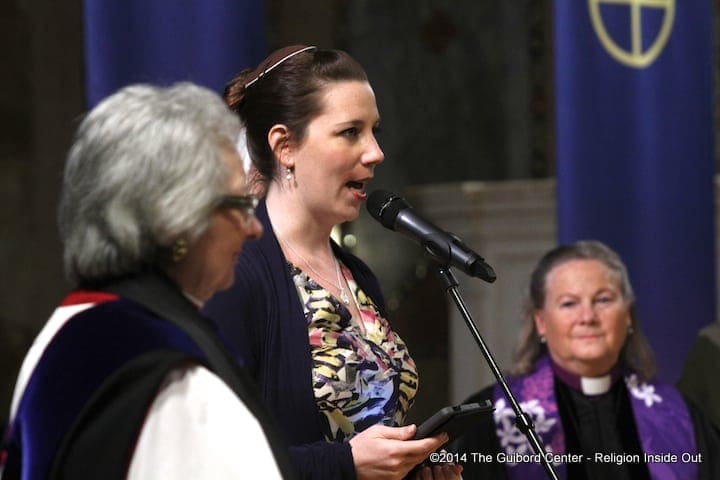

Judaism – The Silence Between the Lines
Silence Between the Lines is a brief talk given by Rabbi Sarah Bassin as part of an interfaith response to violence against women and girls presented by The Guibord Center in 2014.
“As a committed Jew, I come to ancient canonical stories with an assumption that I belong to them and they belong to me. I encounter them searching for Torah, that is, for redemptive teaching, and for zikaron, the collective memory that completes me, that binds me to all who ever have or ever will claim or be claimed by these stories. What happens, however, when I reach out to stories whose worlds do not permit me to enter, that exclude me or distort me? This is the first problem that confronts anyone who attempts to construct a theology of Judaism that includes all the people of Israel – men and women.”
Continue Reading ...
In Genesis, we hear the story of Dinah. This only daughter of Jacob went out into the fields to be among her friends when she was taken by force by Shechem and raped. After Shechem rapes her, his father goes to Jacob to get permission for his son to marry Dinah. Jacob eventually agrees with conditions… but Dinah’s brothers Simeon and Levi are outraged. So they go out and slay Shechem, his father, and all of the males of their city. Throughout this story, we hear Dinah’s voice not once. Dinah not only suffers from the violence of the actual rape. She suffers from the violence of being silenced after her rape.
Sadly, this story is one that transcends time. The violent act is only the first abuse faced by the woman. It is followed by more violence- the violence of blame, of silencing, of heads turning not to see.
There is so much silence in the stories of Jewish tradition. Yet rather than abandon these texts, rather than absolve them of their moral responsibility, I choose to face them, engage with them, and draw out the voices not heard. There are women in this room who have felt what Dinah has felt. Let their words become Torah. In Jewish tradition, we understand the blank spaces between the letters of our sacred text are just as sacred as the letters themselves. As a religious Jew, I am drawn to these blank spaces, this silence… knowing that a more complete Torah lies within them as well.
Torah is a living tree, an evolving path. May we have the strength and wisdom to learn from the stories it tells and to draw out a fuller connection to the divine by reading the silence between the lines.
Seguir leyendo en español...
El Silencio Entre las Líneas
Mujeres de la fe denuncian la violencia – El perspectivo judío
Rabina Sarah Bassin – El silencio entre las líneas
Como una judía entregada, Vengo a antiguas historias canónicas con la suposición de que yo pertenezco a ellos y ellos me pertenecen. Me encuentro con ellos en busca de la Torá, es decir, para la enseñanza de redención, y por Zikaron, la memoria colectiva que me completa, que me une a todos los que alguna vez tiene o alguna vez reclamar o ser reclamados por estas historias. ¿Qué sucede, sin embargo, cuando me acerco a las historias cuyos mundos no me permite entrar, que me excluye ni me distorsionar? Este es el primer problema que enfrenta cualquier persona que intenta construir una teología del judaísmo, que incluye todo el pueblo de los hombres y mujeres israelitas.
Esas palabras no son mías. Pertenecen a uno de los más teólogas feministas judías renombrados de nuestro tiempo- una compañera Angeleno- Dra. Rabina Rachel Adler. Cuando nos enfrentamos a los textos de toda la tradición judía … sí … hay ejemplos de mujeres. Y como feminista religioso, es un impulso natural para mí para escindir a estas historias de un cierto sentido de verme. Sin embargo, para defender estas historias lava solo sobre el silencio y la invisibilidad de tantas otras mujeres en la tradición. Este es el silencio que es la violencia contra las mujeres. Es este silencio de las mujeres en nuestro texto que modela el silencio de las mujeres frente a la violencia en la actualidad. Es la representación frecuente de la mujer como objeto … como bien mueble que perpetúa la cosificación de la mujer.
En Génesis, escuchamos la historia de Dina. Esta única hija de Jacob salió al campo para estar entre sus amigos cuando fue llevada a la fuerza por Siquem y violada. Después de Siquem la viola, su padre va a Jacob para obtener permiso para que su hijo se casara con Dina. Jacob finalmente está de acuerdo con las condiciones … pero Dinah hermanos Simeón y Leví están indignados. Así salen y matan Siquem, su padre, y todos los varones de su ciudad. A lo largo de esta historia, escuchamos Dinah expresar ni una sola vez. Dinah no sólo sufre la violencia de la violación real. Ella sufre de la violencia de ser silenciados después de su violación.
Lamentablemente, esta historia es la que trasciende el tiempo. El acto violento es sólo el primer abuso se enfrenta la mujer. Es seguido por más violencia- la violencia de la culpa, de silenciamiento, de cabezas que dan vuelta para no ver.
Hay tanto silencio en las historias de la tradición judía. Sin embargo, en lugar de abandonar a estos textos, más que absuelve de su responsabilidad moral, elijo enfrentarlos, participar con ellos, y extraer las voces no escuchadas. Hay mujeres en esta sala que se han sentido lo que ha sentido Dina. Deje que sus palabras se convierten en la Torá. En la tradición judía, entendemos los espacios en blanco entre las letras de nuestro texto sagrado son tan sagrado como las propias letras. Como judía religiosa, que leí siento atraído a estos espacios en blanco, este silencio … a sabiendas de que una visión más completa de la Torá se encuentra dentro de ellos también.
Torá es un árbol vivo, una ruta de evolución. Que tengamos la fuerza y sabiduría para
aprender de las historias que cuenta y para extraer una conexión completa a lo divino mediante la lectura del silencio entre las líneas.

Christianity – Saving Grace
Bishop Mary Ann Swenson, United Methodist Church (UMC)
Last Wednesday I received the imposition of ashes, the Christian tradition honoring the beginning of 40 days of Lenten reflection. The ashes are a reminder of our mortality, that human life has limits, and we all need to unleash the Holy, to move from estrangement to right relationship, to find signs of hope and healing.
So tonight is a most appropriate time to consider Saving Grace – from all our perspectives.
Continue Reading ...
You see, none of us has achieved perfection. We have all fallen short of the glory of God. We need to move from estrangement to right relationship, to end violence and dehumanizingany of God’s children.
There are many stories of courageous women throughout the Bible and Christian tradition. It was women who first witnessed the resurrection. They also witnessed the crucifixion and burial; they are thoroughly qualified witnesses. They were part of the inner circle of disciples. Jesus told them along with others that he would be betrayed, crucified and raised. So really church history began when a few women set out to pay their last respects to their dead friend, Jesus. It begins when Jesus comes to them, greets them, lets them touch him as he had touched and restored their lives. Church history begins when the women are told to share with men this experience.
But we know in later years, church history was re-shaped and re-written so that eventually it became an official version that all began with male apostles and no women present.
In the early Christian community women were publically active. The church in Philippi was known for the prominence of women. But by the year 200, the majority of the Christian community had endorsed the pseudo-Pauline letter to Timothy as canon. It is there we find the anti-feminist sentiment attributed to Paul: “Let women learn in silence with all submissiveness… I permit no woman to teach or have authority over men; she is to keep silent.” By the end of the second century women’s participation in worship had been explicitly condemned and groups in which women continued in leadership were branded as heretical.
Until very recent times the subordinate status of women has remained substantially unchanged. Correspondingly, so has the subordinate status of values like affiliation, caring, and nonviolence, stereotypically associated with women. But Saving Grace is an opportunity to recognize that in the Christian community we do sanctify the feminine. One of my favorite examples is a fifteenth century icon painted by Andrei Rublev in Russia. It is a reflection of the Holy Trinity. The original is in a gallery in Moscow. It depicts three angels, messengers of God, all feminine… female figures seated around a table, bearing a chalice.
They form a circle evoking deep mutuality, interconnectedness, and love between one another. But the circle is open inviting the world into this profound experience of community… here are three angels with circular motion to signify unity and equality… thus creating a unity to represent the Holy Trinity in its movement of love. Here is a depiction of a Trinitarian God capable of immense hospitality who calls the world to join the feast.
So for me there is hope we can unleash the Holy, end violence against women, and all experience Saving Grace, for we are all beloved children of the Holy always.
Seguir leyendo en español...
Las mujeres de la fe denuncian – Desde el perspectivo cristiano
Obispa Mary Ann Swenson – Cristiana – Salvando la Gracia
El miércoles pasado yo recibí la imposición de las cenizas, una tradición cristiana honorando la empieza de los 40 días de reflexión de la Lenta. Las cenizas son un recuerdo de nuestra mortalidad, que la vida humana tiene sus límites, y que todos nosotros tenemos que desatar al Sagrado, para moverse desde alejamiento a las relaciones correctas, y para buscar signos de esperanza y curación.
Por eso esta noche es un tiempo más propio para considerar Salvando la Gracia – desde todos nuestros perspectivos.
Un texto clásico en nuestra escritura sagrada es una donde personas casi empiezan a lapidar una mujer. Tiraran unas piedras a ella hasta que muere. Jesús interrumpe, primero dibujando en la arena silenciosamente, y después hablando a la muchedumbre, “Que las personas entre ustedes sin pecado castigaran la primera piedra.” Todos los acusadores se alejan.
Lo ves, nadie de nosotros cumplimos la perfección. Todos hemos caído incumplidos enfrente de la gloria de Dios. Necesitamos movernos desde alejamiento a las relaciones correctas, para terminar la violencia y la deshumanización de ningunos de los niños de Dios.
Hay muchas historias de mujeres valientes en toda la Biblia y la tradición cristiana. Fueron las mujeres que primeras vieron la resurrección. También vieron la crucifixión y el entierro; ellas son totalmente calificadas como testigos. Ellas fueron parte de círculo interno de los discípulos. Jesús les dijo que con otras personas el será traicionado, crucificado y elevado. En realidad, la historia de la iglesia empezó cuando algunas mujeres fueron a dar sus últimos respetos a su amigo muerto, Jesús. Empieza cuando Jesús llega a ellos, les saluda, les dejan a tocarle como el había tocado y restaurado a sus vidas. La historia de la iglesia empieza cuando las mujeres han dichos a compartir con los hombres esta experiencia.
Pero sabemos en los años que pasen, la historia de la iglesia había reformados and reescrito para que eventualmente fue una versión oficial empezó todo con los apóstolos masculinos y sin la presencia de los mujeres.
En la comunidad cristiana antigua, las mujeres estaban activas públicamente. La iglesia en Philippi fue reconocido por su prominencia de las mujeres. Pero hasta el año 200, la mayoría de la comunidad cristiana ha endosado a la carta falsa de Paulo a Timoteo como canónigo. Es desde ahí donde encontramos el sentimiento -anti-femenino atribuido a Paulo: “Dejan los mujeres a aprender en silencio con toda sumisión… Yo no permito a ninguna mujer a ensenar o en tener autoridad encima de los hombres; ella tiene que quedar silenciada.” Hasta que termina el segundo siglo la participación de las mujeres de rezos fue explícitamente prohibido y los grupos in que las mujeres continuaron en su liderazgo habían marcados como heréticos.
Hasta los tiempos muy recientes, el status subordinado de las mujeres ha quedado sustantivamente sin cambio. Correspondientemente, también el status subordinado de los valores como la afiliación, el cuidado, y la no-violencia, estereotípicamente asociados con las mujeres. Pero Salvando la gracia en una oportunidad de reconocer que la comunidad cristiana santifica la femenina. Uno de mis ejemplos favoritos es un icono del siglo XV pintado for Andrei Rublev en Rusia. Es una reflexión de la Santa Trinidad. El original está en una galería en Mosco. Representa tres ángeles, mensajeros de Dios, todas femeninas… figuras femeninas sentadas alrededor de una mesa, con un cáliz en la mano.
Ellas forman un círculo evocando una mutualidad profunda, interconexión, y amor entre uno al otro. Pero el circulo está abierta invitando el mundo dentro de esta experiencia profunda de una comunidad… aquí hay tres ángeles con moción circular para significar unidad e igualdad… creando así una unidad para representar la Santa Trinidad en su movimiento de amor. Aquí es una representación de un Dios trinitaria que es capaz de una hospitalidad inmensa quien llama al mundo en unirse por la fiesta.
Así que para mí hay esperanza en que podemos desatraillar la Sagrada, acabar con la violencia en contra de las mujeres, y que todos pueden experimentar Salvar la Gracia, porque todos somos los hijos amados del Santo por siempre.

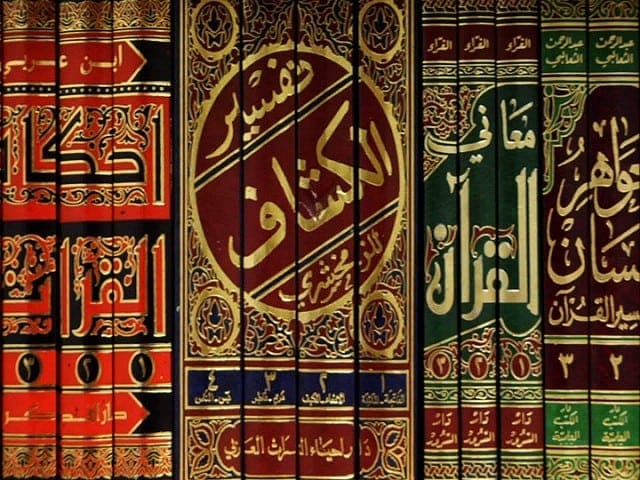
Islam and Women – Created Out of One Soul
Edina Lekovic – Muslim Public Affairs Council
As a practicing Muslim, as one who surrenders to God on a daily basis, or at least seeks to, I’m someone who is deeply aware of my own traditions, which caused a revolution in the early days of Islam by unseating traditions related to women. At the time of pre-Islamic Arabia, when girl-babies were buried alive in the desert only for being girls, the message of the Quran, from God to humankind, said directly that we were created out of one soul, that from that soul God created its mate; that from our point of origin we start in equality and that our responsibility on this earth is a shared one.
Continue Reading ...
While we look within the same text, and we find verses of liberation, of equality, of equal human dignity for all people, we find too within this text challenging verses like this one, which have been debated by scholars throughout the centuries, and (in which), like the traditions before us, the scholarship of women has been subsumed, denied, and in many cases been erased. So then the discussion has been left to male scholars, almost exclusively, which has robbed women, Muslim women and beyond, of their voices over the centuries, which they are seeking to rightfully claim back.
Now as Muslims, our highest example of what it means to be a Muslim comes in the form of Prophet Muhammad, peace be upon him, who we believe to have received God’s message but who is merely a man, with no more miraculous qualities about him except that he heard God’s message directly and that he lived that message.
The way that I cope with the challenging text is by looking at the example of the Prophet Muhammad. Prophet Muhammad was a man who, in the face of these texts (we ask) how did he treat the women in his own life? To his wives, to the women within his community, to his daughters he was nothing less than a person who saw all human beings with full equal human dignity and full and equal rights. In fact he was one who was a loving husband and father, and caretaker of the community, who was frequently addressed by women within the mosque and who was challenged by women within the mosque and never so much as challenged them back, but welcomed their inquiries.
This is what it means to have good gender relations, good human relations within our community, and it is the ultimate model of what we strive to fulfill as Muslims living on this earth.
Now I made reference to the verse earlier that in many ways is the antithesis of the challenging verses. And it goes back to the story of human creation as told in the Koran and that’s where I would like to end. God said, at the beginning of the same chapter called ‘Women’, “O mankind, be careful of your duty to your Lord, who created you from a single soul, and from it, its mate, and from them both spread abroad a multitude of men and women. Be careful of your duty toward God, in whom you claim of one another, and toward the wombs that bore you. Lo! God has been a watcher over you.”
God tells us to be careful. He knows our weaknesses and He knows our shortcomings, and He knows the societal forces that seek to tear us apart. So may we be careful as we seek to live the principles of all our faiths and my prayer tonight, for the Muslim community worldwide, is: “May we as Muslims catch up with the teachings of Islam and the treatment of women.”
Seguir leyendo en español...
El perspectivo islámico – Crecido desde un alma
Edina Lekovic – Muslim Public Affairs Council
Como una musulmana practicante, como una que se rende a Dios todos los días, o como me perece lo puedo, yo soy alguien que está totalmente alerte su propia tradiciones, que había causado una revolución en los días antiguas de Islam en desasentar las tradiciones relatadas con mujeres. En el tiempo de la Arabia pre-islámica, cuando las niñas fueron entierradas en el desierto solo para ser niñas, el mensaje del Corán, desde Dios a la humanidad, dijo directamente que nosotros fuimos creados desde una alma, donde desde la alma Dios creció su compañero; desde nuestro punto de origen empezamos en el igualdad y que nuestra responsabilidad en este mundo es compartida.
Ahora, Islam es la continuación del mensaje de judaísmo y cristianismo, y por eso ha heredado a muchas de las mismas pasajes desafiantes con que todos de nosotros luchamos con. Desde las unas que son lo más usados por los musulmanes es el verso de la etapa de “Los mujeres” en el Corán, en que Dios dice: “Los hombres cuidaran en total a las mujeres con los generosidades que Dios ha otorgado más abundantemente al primero en vez que a la segunda. Y con que posiblemente puede gastar desde sus posesiones. Y los justos son verdaderamente los más devotos quien guardan la intimidad que Dios ha ordenado a ser guardado. Y para las mujeres que les dan razones para temer, primero amonéstenlas, después déjenlas solas en las camas, y después véncelas y luego si pagan a usted presta atención, no buscan hacerles daño. ¡Observan! Dios ciertamente es el más alto y el gran.
Si vemos el mismo texto, y encontramos las miasmas versas de liberación, de igualdad, y del dignidad igual de todas las personas, también encontramos en el texto desafiante las versas como esta, que habían debatido los eruditos durante muchos siglos, y en que las tradiciones antes de nosotros, la escolástica de las mujeres había sido subsumida, prohibida, y en muchos casos borrada. Así la discusión se ha dejado con los eruditos, casi exclusivamente, donde haya robado a las mujeres, mujeres musulmanes y lo demás, de sus voces en los siglos que pasaron, que están tratando de reclamar legítimamente.
Ahora como musulmanes, nuestro ejemplo de lo que significa ser un musulmán viene en la forma del profeto Muhammad, que la paz queda con él, quien creemos que ha recibido el mensaje de Dios pero quien sería solo un hombre, que tenía no más las cualidades milagrosos al excepción de oír el mensaje de Dios directamente y que lo vivió.
La manera en que yo hago frente al texto desafiante es en mirar al ejemplo del profeto Muhammad. El profeto Muhammad fue un hombre quien, en la cara de estos textos (preguntamos) como trató a las mujeres en su vida propia. A su esposas, a las mujeres en su comunidad, y a su hijas fue no menos que una persona quien vio a todos los seres humanos con la pura dignidad humana y con derechos puros e iguales. De hecho fue un esposo amante y padre, y cuidador de la comunidad, quien fue frecuentemente desafiado por las mujeres en la mezquita y nunca desafió a ellas pero dio la bienvenida a sus consultas.
Este es lo que significa tener buenas relaciones entre los sexos, buenas relaciones humanas entre la comunidad, y el modelo definitivo de lo que nos esfuerza por cumplir como musulmanes viviendo por esta tierra.
Ahora yo hice una referencia a la versa antes que en muchas maneras es el antítesis que las versas desafiantes. Se va por atrás a la historia de la creación humana como dijo el Corán y ahí es donde quiero terminar. Dios dijo, en la empieza de la misma etapa que se llama “Los mujeres”, “O humanidad, ten cuidado de su obligación a tu Dios, quien creció a ti desde una alma sola, y desde eso, su compañero y desde esos aparecieron a un multitud de hombres y mujeres. Ten cuidado a tu obligación a Dios, en quien aclamas por uno a otro, y a los úteros que te suportó. Lo! Dios siempre fue un mirador por ti.
Dios nos dice a tener cuidado. Él sabe nuestras debilidades y Él sabe nuestras deficiencias, y Él sabe las fuerzas de la sociedad que nos quiere separar. Que nosotros seamos cuidados para que podemos buscar y vivir los principios de todas nuestras fes y mi rezo esta noche, por la comunidad musulmana en el mundo, y que nosotros como musulmanes llegamos al punto con los enseñamientos de Islam y el tratamiento de las mujeres.
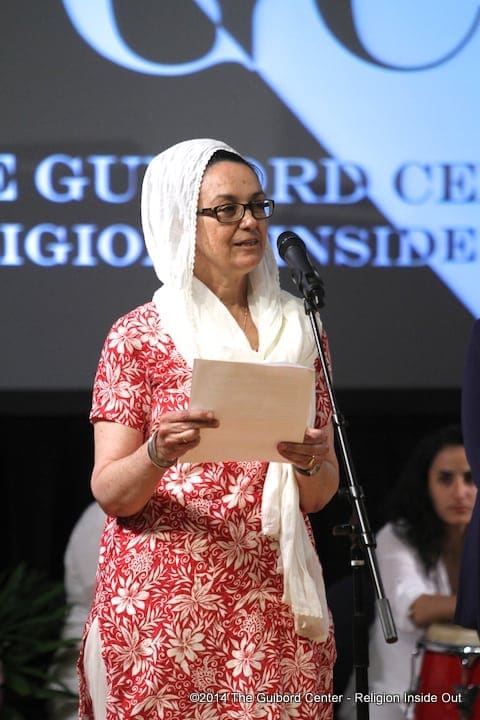
Sikhism – Respect and Equality
Jacquie Kaur Khalsa – Khalsa Peace Corps
Sikhism places women on a respected and equal footing with men. This was true from the beginning. Guru Nanek, the first Sikh guru, saw and appreciated the richness and diversity of the natural world. He was a spiritual man, and felt the strong connection and oneness with the whole of creation. He believed that every form of creation was precious and deserving of honor and respect.
Continue Reading ...
Sikh means followers, and followers of the guru came from all faiths. Focusing on the issue of gender respect and equality, some examples of this reform movement are as follows:
Guru Amar Das was one of the leading proponents of establishing respect and equal status of women. Among followers, he banned the common practice of forcing women to veil their faces. Among his followers he also banned sati, the common practice in which a woman was expected to commit suicide by jumping into the funeral pyre of her husband. When Guru Amar Das appointed followers to become emissaries of the Guru throughout the region, of the 22 emissaries he chose seven women.
Mata Khivi, the wife of Guru Angad, was recognized for institutionalizing langar, the free community meal service started by Guru Nanek that is in full force and continues to this day.
Guru Govind Singh made a bold move in appointing Mai Bhago, a woman, as commander of Sikh forces.
Guru Ram Das spoke out against the oppressive dowry practice of extracting expensive gifts and money from the bride’s family for the purpose of show, false pride, and gilding. Unfortunately, this practice is still too common today. There is even an imbalance in the number of female births caused by the fear of not having enough money for the dowry of a girl child down the road. The imbalance in the female population creates an increased demand for females coming of age, and puts them at special risk for crimes such as rape.
However righteous and pure the tenets of our faith are with respect to gender equality, the individual respect we accord each other in our daily actions is what matters. These actions are personal choices that we make each hour of each day.
I would like to close my comments with a translation of a song by Guru Nanek that I feel speaks to the heart of this topic and attempts to guide our personal choices with pure simple wisdom. It has been sung every morning for 500 years in the Golden Temple in India, as well as in many gurdwaras all over the world.
From woman, man is born
Within woman, man is complete,
To woman he is engaged and married
Woman becomes a friend
Through woman, the future generations come
When his woman dies, he seeks another woman
To woman he is bound, so why call her back
From her, kings are born
From woman, woman is born
Without woman, there would be no one at all
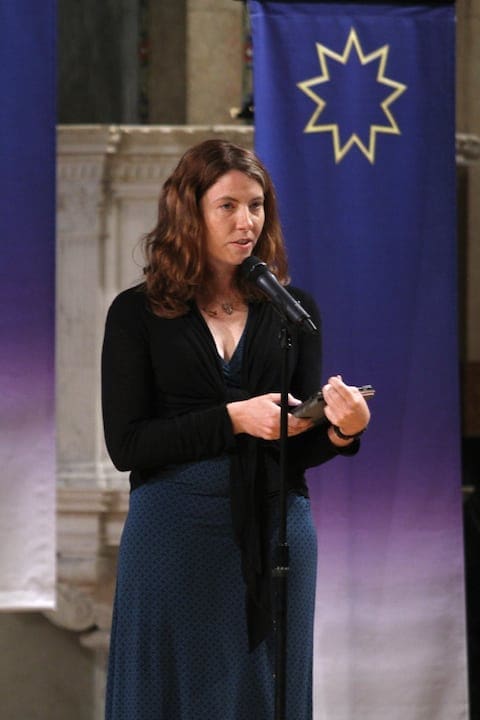
Bahá’i – Unity and Equality
Janella Conroy – Bahá’i Center, Los Angeles
I want to express my deep gratitude for participating in this presentation and words will (fail) to convey my love for you and for all of the participants here, and my happiness at addressing such a difficult conversation. And I wanted to share some of the quotes from the Bahá’i writings.
Continue Reading ...
“The world of humanity has two wings — one is women and the other men. Not until both wings are equally developed can the bird fly. Should one wing remain weak, flight is impossible.”
As Bahá’u’lláh has written, “The well-being of mankind, its peace and security, are unattainable unless and until its unity is firmly established.”
“As long as women are prevented from attaining their highest possibilities,” the Bahá’í Writings state, “so long will men be unable to achieve the greatness which might be theirs.”
It is clear that only when “the injury of one shall be considered the injury of all; the comfort of each, the comfort of all; the honor of one, the honor of all,” will the human race have addressed the challenges inherent in social structures based on domination, in which injustice is accepted as the natural order of things.
“Men have an inescapable duty to promote the equality of women.”
“Woman’s lack of progress and proficiency has been due to her need of equal education and opportunity. Had she been allowed this equality, there is no doubt she would be the counterpart of man in ability and capacity. The happiness of mankind will be realized when women and men coordinate and advance equally, for each is the complement and helpmeet of the other.”
Sources and further reading:
Selections from the Bahá’í Writings on Women
http://info.bahai.org/article-1-7-6-1.html
The Impact of Racism on Women
http://statements.bahai.org/01-0108.htm
Two Wings of a Bird: The Equality of Women and Men
A Statement of the National Spiritual Assembly of the Bahá’ís of the United States
http://info.bahai.org/article-1-9-1-9.html
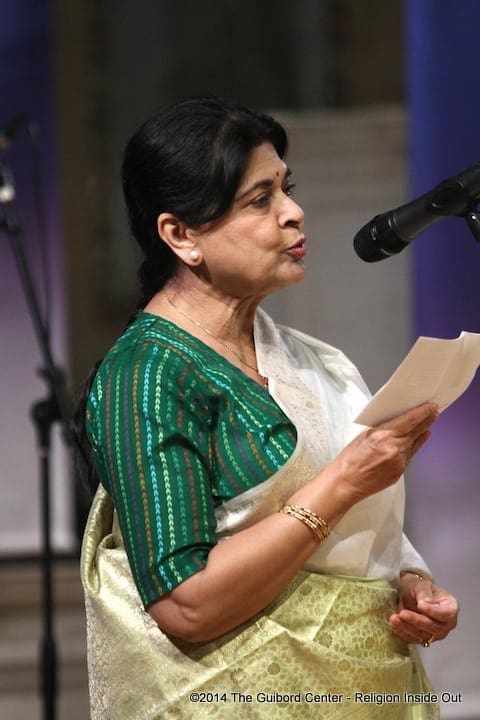
Hinduism – The Disappearing of Women
Rini Ghosh
In the Vedas (the Hindu texts), composed over 5,000 years ago, it is said: “In the beginning was the Cosmic Being, the Atman, that divided itself into two, male and female, which formed the first pair, and all the pairs of creation are said to be the replica of this original pair. The masculine form creates, maintains and destroys but the force behind all this action is the feminine power or Shakti. Without the feminine power, all action is null and void.” (It is) written in our ancient texts.
Continue Reading ...
The ancient Hindu women were assertive yet nourishing, the pivots of the Society. There are innumerable mentions of very powerful Hindu women in the Ancient Vedas, and other early compositions. The Vishnu Puranas even refers to the Earth as the Mother, stating: “The Earth is not a static dead rock; she is a living being, the mother, the Goddess, Bhu-Devi, whom we are to love, respect and nurture – as the Mother so patiently nurtures us.”
But then came the foreign invasions. To protect themselves from the invaders’ greedy eyes, women started using Purdah, a veil covering the face and body. Thus their movements were restricted, which curtailed their freedom in every way. The religious texts too were manipulated, playing off one group against the other, changing people’s mindset. Girls came to be looked upon as a burden that needed to be cared for and made no financial contribution. Whereas a boy child had the freedom to do things and help as an earning member.
Thus, a vicious circle started in the new society where women were relegated to the very bottom. This gave rise to a series of tribulations for Hindu girls such as restrictions on education, female infanticide, child marriage and Sati. These are simply abominable practices still prevalent in the remote areas. Of course the government has passed laws to abolish them, but too little too late. We, the people, are the ones who have to act with immediate effect. We have to all say in unison:
“WE WILL NOT BE SILENCED; WE WILL NOT BE DISAPPEARED.”
Seguir leyendo en español...
Mujeres de fe denuncian – Hinduismo 1
Observaciones de Rini Ghosh – La desaparición de las mujeres
En los Vedas, que habían compuesto más de 5,000 ano, dice: “Al principio fue la Existencia Cósmica, el Atman, que dividió en si a dos, el hombre y la mujer, que formaron la primera pareja, y dicen que todas las parejas de creación son las réplicas de esta primera pareja. La masculina crece, manifiesta y destruye pero la fuerza detrás de todo es el poder femenino de Shakti.
Sin el poder femenino, todas las acciones son nulas y sin efecto. Las mujeres hindúes antiguas fueron afirmativas pero nutritivas como los pivotes de la sociedad. Hay menciones innumerables de mujeres muy poderosas in los Vedas antiguos y otras composiciones. Los puranas de Visnú refieren incluso a la tierra como la madre: “La tierra no es una piedra muerta ni estática; ella es un ser vivo, la Madre, la Diosa, Bhu-Devi, a quien tenemos que amar, respetar y alimentar – como la Madre nos alimenta pacientemente.
Pero tal vez vinieron las invasiones extranjeras – para proteger ellas mismas desde el mal de ojo, las mujeres empezaron a usar “Purdah” – un velo que cubre la cara y el cuerpo. En consecuencia, los movimientos de las mujeres fueron restringidos y sus libertades fueron acortadas en cada manera. Los textos religiosos también fueron manipulados, poniendo un grupo en contra de otro y cambiando la mentalidad de las personas. Niñas llegaron a ser consideradas como unas cargas que necesitarían ser cuidadas y que no tenían ninguna contribución financia, mientras que un niño tenía la libertad de hacer cosas y de ayudar la familia como un miembro de ingresos. Es así como empezó un círculo vicioso donde las mujeres habían relegado hasta el fondo de la nueva sociedad. Este dio lugar a una serie que tribulaciones para mujeres hindúes como las restricciones por la educación, matrimonio infantil, Sati, etc.

Brahma Kumaris – Spiritual Vision
BK Sister Gita
Ancient India was known for its evident practice of spirituality where women enjoyed equal status with men in all aspects of life. However, this equality declined and fear of women’s sanity and safety arose during foreign invasion. Even though the old practices like sati, purdah, dowry, child marriages are lawfully banned, the situation of women in modern India is alarming. Fashion, media entertainment, alcohol, and drugs have influenced the vision of men towards women more violently, leading to increased gang rapes, sexual abuses, prostitution and trafficking. While the whole world witnesses and propagates the cruelty women suffer, this violence seems endless.
Continue Reading ...
In 1930s, an organization arose whose founder Brahma Baba, formed a trustee of 8 women to administer the spiritual work of humankind. Since then, the organization has been silently creating spiritual awareness among humankind enabling each individual to see oneself and others beyond their bodies, changing the attitude and vision to soul consciousness.
Through this fundamental change of dominant attitude and vision, which is deep-rooted in men’s consciousness, a world of equality, love and dignity for women is created. Men who join our organization learn the art of considering women as their brother souls and treat them with respect. With the right understanding of spiritual knowledge, men serve as a backbone inspiring women to be in front even though both are equally involved in spiritual services. Such humility of men has been developed with self-respect and spiritual understanding.
Through spiritual awareness, families who practice our Raja Yoga meditation tend to be more peaceful and harmonious than other families. Teenage boys and girls sustain their spiritual values without getting addicted to various destructive habits.
Being a part of this organization for over 40 years, I personally feel, we, as a global family have encouraged spiritual awareness and unity in the society and will continue to serve the world tirelessly. With pure spiritual vision in our hearts, slowly and gradually women will become Goddesses.
It is a privilege to be with you all. Thank you. Om shanti.
“WE WILL NOT BE SILENCED; WE WILL NOT BE DISAPPEARED.”
Seguir leyendo en español...
Mujeres de fe denuncian – Brahma Kumaris
La India Antigua fue conocida por su práctica evidente de espiritualidad donde las mujeres disfrutaron la igualdad de condición con los hombres en cada manera de la vida. Sin embargo, esta igualdad disminuyó con el miedo de la cordura y la seguridad de las mujeres que surgió a partir de las invasiones extranjeras. Aunque los prácticos antiguos del sati, el purdah, la dote y el matrimonio infantil son legalmente prohibidos, la situación de las mujeres en la India moderna es alarmante. La moda, los medios de entretenimiento, el alcohol, y las drogas han creado una visión más violenta de los hombres hacia las mujeres, que llevo un aumento de violaciones en grupo, abusos sexuales, prostitución y tráfico humano. Mientras que todo el mundo testigua y propaga la crueldad que las mujeres sufrieron, esta violencia se parece sin fin.
En la década de 1930, una organización surgió donde su fundador Brahma baba, formo un sindicato de 8 mujeres para administrar el trabajo espiritual de la humanidad. Desde entonces, la organización ha estado creando, en silencio, percatación espiritual entre la humanidad, permitiendo cada persona a ver uno mismo y a otros más allá de sus cuerpos, cambiando la actitud y la visión al consciencia del alma.
Por este cambio fundamental de actitudes y visiones dominantes, que son muy arraigados en la consciencia de los hombres, un mundo de igualdad, amor, y dignidad para las mujeres es creado. Los hombres que se unen a nuestra organización aprendan el arte de considerar a las mujeres como unos ‘hermanos de alma’ y tratándoles con respeto. Con la comprensión de conocimiento spiritual, los hombres sirven como un espinazo inspirando a mujeres a ser enfrente, aunque los dos son igualmente involucrados en los servicios espirituales. Tal humildad ha sido desarrollado con el respeto a ti mismo and la comprensión espiritual.
A través de la conciencia espiritual, familias que practican nuestra meditación de Raja Yoga tienen la intención de ser más tranquilos y armoniosos que otra familias. Adolescentes sostienen su valor espiritual sin hacerse adictos con varios hábitos destructivos.
Siendo una parte de esta organización durante más de 40 años, yo personalmente pienso que nosotros, como una familia global, han animado a la comprensión spiritual y la unidad en la sociedad y vamos a continuar a servir al mundo sin descanso. Con una visión spiritual pura en nuestros corazones, despacio y gradualmente, las mujeres se convertirán a diosas.
Es un privilegio de estar con ustedes. Muchas gracias, Om shanti.
“NO SEREMOS SILENCIADOS; NO SEREMOS DESAPARECIDAS.”
Om Shanti
Con amor divino
BK Hermana Gita
Brahma Kumaris
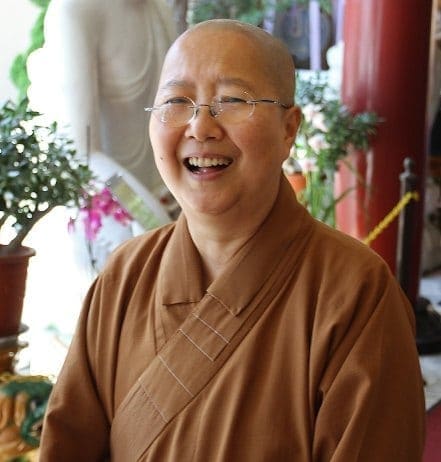
Buddhism – Propping Up Half the Sky
Venerable Miao Hsi – Fo Guang Shan Hsi Lai Temple
Ven. Miao Hsi took part in planning this event from the start but couldn’t join at the last minute because of responsibilities at Hsi Lai Temple – a living example of women leaders’ importance at the Temple.
Traditionally, Chinese Buddhism has always been male-centered, though there are many female monastics with high achievements. In Theravada and Tibetan traditions, most nuns are not even allowed to receive full ordination. Women who renounced under these traditions often remained “novices” all their lives, being marginalized or even ignored, regardless of their practice and contributions.
Continue Reading ...
Hence, at Fo Guang Shan, female monastic disciples are extraordinarily fortunate. People visiting our temples and centers are often amazed that many more women are in charge and given major responsibilities in different units of administration. Our temples around the world are headed by “abbots” as well as “abbesses,” performing similar duties and presiding over Dharma services.
In Chinese culture, while women are traditionally relegated to secondary roles in the family or community, the “saving grace” for Chinese people is filial piety. Mothers hold an “immovable position” of respect and honor for their giving birth and nurturing their children. Filial children often have much greater love and respect for their mothers than fathers, not to speak of grandmothers, the iconic nurturing figure in all cultures.
In modern China, women are often considered as “propping up half the sky.” But unfortunately, the traditional concept of having a son to pass down the family legacy is so deep-rooted that under the government’s one-child policy, female fetuses are often aborted and female infants abandoned or even killed… Nevertheless, modern Chinese women do enjoy much more freedom and opportunities than their predecessors for a better future.
“WE WILL NOT BE SILENT; WE WILL NOT BE DISAPPEARED.”
